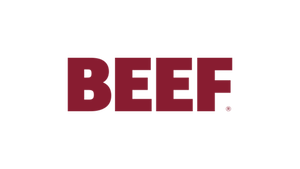7 ways to effectively communicate agricultural science
Want to be a better agricultural advocate in 2019? It starts with changing the way we communicate with our consumers. Learn how understanding their values can help us better share our science.
December 31, 2018

Who is ready to hit the ground running in 2019? We are going to need all hands on deck to appropriately and effectively communicate our agricultural stories in the New Year.
One of my resolutions is to improve the way I present the messages I want to share. It can be easy to just preach to the choir (other producers) and as a result, we often use language that speaks to our value systems and beliefs. But how are our consumers receiving our messages? How are they interpreting our science?
These were the questions asked by Mike Dahlstrom, associate professor of journalism and mass communication at Iowa State University. Dahlstrom presented at the National Institute for Animal Agriculture Antibiotic Symposium last November, and an industry friend of mine recently shared his message with me.
The 13-minute presentation titled, “Communicating Your Science: What’s It Really About?” can be found on YouTube by clicking here. It’s well worth your time to watch the entire thing, but I’ve put together a quick summation of Dahlstrom’s message on today’s blog.
Here are the key points from this speech, which can be applied to help us all become more effective agricultural advocates in 2019.
1. Avoid jargon
Dahlstrom says, “Science uses words that often mean nothing to a non-expert. Describe your science only using words your audience uses frequently.”
2. Analogies and metaphors
“Maybe a picture is worth 1,000 words, but a great metaphor is worth 1,000 pictures,” he explains. “Analogies and metaphors offer a comparison to allow a complex topic to be understood through a familiar idea.”
3. Narrative examples
Place abstract ideas into everyday contexts through specific stories to increase relevance, he suggests.
Dahlstrom adds, “Instead of saying, ‘antimicrobial resistance is a serious threat to public health,’ we could say, ‘Robert should have recovered quickly from his surgery, but MRSA had other plans.’
4. Consider the best model of communication
In a nutshell, Dahlstrom says we often revert to the transmission model, which focuses on the transmission of facts with a source, transmitter, noise source, channel, receiver and destination. We believe we have knowledge that the consumer doesn’t, and we try to transmit our knowledge across many barriers to be received by our audience. As a result, the information is often lost in translation.
Another similar model is the deficit model of science communication, where science generates knowledge that needs to get to society.
“This does not work,” he says. “Knowledge and attitudes about science are generally not correlated. More knowledge can actually lead to less favorable attitudes toward science and greater polarization.”
He explains, “The reason is knowledge is important but not easy to interpret until applied to an underlying value system. It is this application that drives attitudes, behaviors and acceptance of scientific technologies. There are many competing values across audiences. Science describes and explains the world but can never tell society what should be done.”
Dahlstrom gives the example of raw milk. Should raw milk be legal? The science, he says, is that drinking raw milk significantly increases the risk of food-borne illnesses. However, underlying values differ. Value one is, ‘I want to keep people safe,’ while value two is, ‘I want freedom of choice.’”
5. Use the public engagement of science model to communicate with consumers
“The public engagement of science model is one we need to think about,” he says. “Under this model, controversies about science represent a necessary function of the democratic process. The role of communication is to facilitate discussion toward decisions informed by societal values and accurate science.
“This is a two-way engagement between expert and public. Let everyone debate values and determine how to apply the best science moving forward.”
He adds, “In other words, we may be wasting valuable time and resources by focusing our efforts on putting more and more information in front of an unaware public, without first developing a better understanding of how different groups will filter or reinterpret this information when it reaches them, given their personal value systems and beliefs.”
6. Understanding value systems
“There are lots of ways to measure values and conceptualize values, but the one I want to talk about is the cultural theory, which says many conflicts around science are not really disagreements about science, but are rather differences in aligning the desired solution to what an individual views as good societal structure. Individuals selectively attend to and interpret information in a manner that expresses and reinforces their preferred way of life.”
Using sustainability as an example, Dahlstrom explains how four different value systems interpret this hot topic.
Egalitarians believe greed has destroyed shared resources and that we need to return to smaller institutions and simpler lifestyles where everyone does a little.
Those who believe in an overall hierarchy say a lack of order has destroyed shared resources. They believe we need new organizations with rules and enforcement, and an authoritative truth needs to be accepted.
Individualists say that unnecessary social burdens have destroyed resources. They desire more freedom to allow solutions to arise from competition and say other groups are scaremongers.
The fatalists say destroyed resources are inevitable. They believe all other groups have failed sometime in the past, so stop wasting time and energy trying.
7. Interpreting science through the lens of our own values
In presenting scientific information to the public, Dahlstrom says, “The audience will seek out information that aligns with their existing needs and values. They will also interpret science information through the filter of those values. It doesn’t make science communication easier, but it will make it more effective.”
In speaking to producers, he concludes, “I want to challenge you to reflect on your own values. You’re not immune to this. You have values, too. What values do you use to interpret issues surrounding antibiotic use and resistance? What values are driving social misunderstanding or controversy about antibiotic use and resistance? Consider the arguments for or against the issue in the media or made by the general public. What values are those arguments being used to support?”
Finally, he says agriculture needs to ask these fundamental questions when designing messages for the public: What is my goal? Who is my audience? Why would they care? How best can I reach them? What values might guide their interpretation of my message? How can I earn their trust?
As we enter a new year, we have 365 new opportunities to share our stories to protect our future, maintain our food security and keep farmers and ranchers producing food, fiber and other resources for a growing planet.
If we are to be effective, we must not only have sound science to share with the public, but we also must appeal to the value systems of our audiences.
The opinions of Amanda Radke are not necessarily those of beefmagazine.com or Farm Progress.
About the Author(s)
You May Also Like





